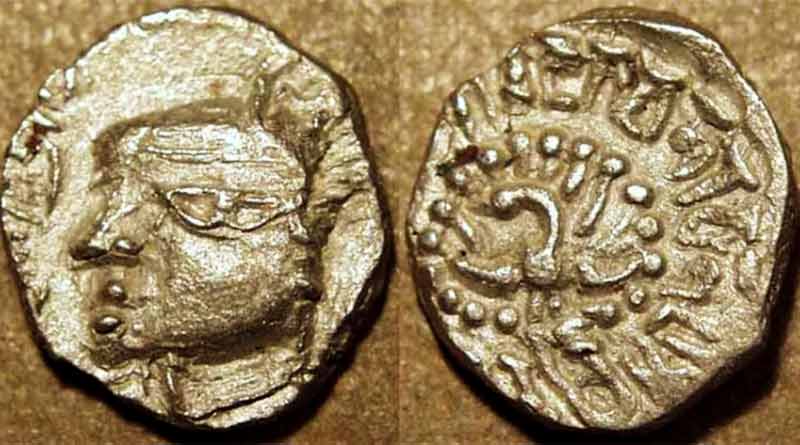Harshavardhana created an empire which spread from northern and northwestern India down to Narmada River in southern India. Harshavardhana also patronised literature and art, writing three Sanskrit plays himself including Nagananda, Ratnavali and Priyadarsika as well as endowing many scholars and monks with money gifts.
Harshavardhana maintained the old monarchical governance structure from previous imperial periods. Banabhatta was an avid supporter of this administration.
Personal Supervision
Harshavardhana, son of Prabhakar Vardhana, established an enormous kingdom in northern India. As ruler of Pushyabhuti or Vardhana Dynasty during 7th Century AD he established an expansive but stable empire which remains to this day.
Hieun Tsang asserted that he personally oversaw all aspects of his empire and visited each post under his jurisdiction, visiting each one personally as he punished corrupt officials and wrongdoers with severe punishments. Furthermore, Hieun Tsang noted that Hieun Tsang performed his duties so assiduously that oftentimes he forgot to eat and sleep!
He promoted education and established numerous hospices for poor students and religious travellers, banned animal slaughter, was ardent Shaivite but also open to other religions; wrote three Sanskrit plays- Nagananda, Ratnavali and Priyadarshika as well as creating many endowments to protect Nalanda University against attacks by enemies.
Harshavardhana was an effective ruler who established strong relations between neighbouring kingdoms, including Kannauj, and his empire as it battled Huna in northern India from 606 AD until 647 AD. Kannauj became the focal point of his rule.
Public Records
Harshavardhana was an expert at keeping meticulous public records. He kept an account of all events taking place within his empire, good or bad; this system became known as Nilopitu. Additionally, he encouraged all his officials to also maintain records of their work.
His empire was divided into provinces, districts (vishayas), and villages, each led by a Harisena and each division’s chief magistrate was known as Mahadandanayaka. Other important officers mentioned in inscriptions include Sreshti (chief banker), Sarthavaha (chief merchant caravan leader), Prathamakulika (chief craftsman) and Kayashthas (head of scribes).
Harshavardhana was praised by Chinese traveler Xuanzang for providing excellent public services despite having an expansive empire. Xuanzang noted his generosity and administrative prowess as hallmarks of leadership.
He was an ardent worshipper of Lord Shiva and advocate for Buddhism, yet also an open-minded Shaivite who did not force his beliefs onto others. His reign marked an important turning point in India history – it marked the last time Hindu kings held such power over northern India until his death in 647 CE and subsequent Muslim conquest of North India by Rajyavardhana his son succeeded him.
Taxes
Harshavardhana was an influential Vardhana dynasty member who established an enormous kingdom that extended from northern and northwestern India all the way southward to Narmada River in southern India. One of the most acclaimed Indian monarchs of seventh century AD, during his rule Harshavardhana consolidated his empire and ensured social stability while leading with kindness and efficiency.
Harshavardhana divided his income into four equal parts- for his king, army and administration, religious endowments and poor and destitute. According to Hiuen Tsang, Harshavardhana maintained efficient civil administration while upholding good relations with other countries; furthermore he did not utilize his legal system against his subjects and did not impose taxes on goods but instead levied taxes only on ferries and barrier stations.
However, their taxation system was significantly different from that of Gupta rulers: only 1/6th of citizens’ land earnings was taken by the king; the rest went to intermediaries and feudal lords as payment for services rendered; officials received pay through land grants in return for their service and rewards were often given in kind for their efforts.
Copperplates demonstrate how Harshavardhana distributed his land to priests, temples, ecclesiastical institutions and his sons and other relatives as gifts, effectively restricting peasants’ rights by forcing them into sharecropping relationships dependent on their beneficiaries.
Religion
Harshavardhana was left an immense empire by his brother. To govern it effectively and improve lives for his subjects, he created various welfare schemes including hospitals and dispensaries offering free medical services, roads and bridges to facilitate trade and commerce and many welfare schemes that helped improve living standards of his subjects. Harshavardhana proved an extremely generous ruler by setting up many welfare schemes to enhance lives. These included hospitals and dispensaries providing free medical services as well as roads and bridges that allowed more efficient trade to occur between provinces ruled by provincial governors governed by provincial governors he created many welfare schemes which helped improve lives such as hospitals providing free medical services as well as roads and bridges to facilitate trade and commerce activities among his subjects he constructed many welfare schemes which provided free healthcare to improve lives further such as free medical facilities providing hospitals dispensaries which provided free healthcare as well as roads facilitating commerce between regions of his subjects including hospitals dispensaries which provided free healthcare services, roads facilitating trade between regions as well as bridges enabling easy travel between regions; as he also built numerous welfare schemes that enhanced lives he created many granting schemes which allowed his subjects’ lives including hospitals dispensaries which provided free medical care as well as roads facilitating commerce between regions he established during his rule.
As King, Ashoka ensured his people received quality education and access to higher learning, creating the famed Nalanda University which at its height during his reign, in addition to other educational institutions in his kingdom. Ashoka was religiously tolerant, patronizing various scholars and artists from diverse religious traditions while himself authoring three Sanskrit plays (Nacctncmda, Ratnavali and Priyadarshika) during his rule; hence it’s one of India’s golden ages.
He engaged in several military campaigns to expand his empire, defeating both Pushyabhutis of Uttar Pradesh and Maukhari Dynasty from central India, as well as making friends with Chinese Tang dynasty. As a decisive leader, he could quickly make decisions during times of crisis through his Council of Ministers; therefore enabling timely execution.
